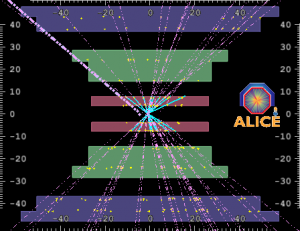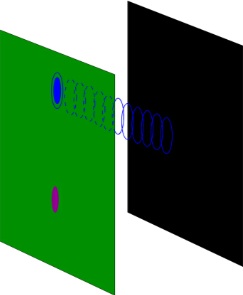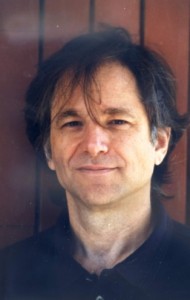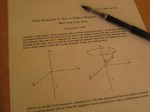Happy Higgs Hunting
 In case you were wondering, things are moving steadily along in the search for the Higgs boson, and in the general ramping up to study entirely new frontiers of particle physics. I noticed a couple of interesting articles today that give you a nice sample. The first, by Dick Ahlstrom in the Irish Times, and is about the announced “rediscovery” of the W and Z bosons at the Large Hadron Collider, by a team working at the LHCb experiment. (I personally think that the term “rediscovery” is somewhat misleading since it makes it seem like the community forgot where they (the key signatures of the unity of the electromagnetic and weak nuclear forces at high energy) were since their discovery in the early 80s, but let me not quibble too much.) The point is that experimental teams are refining their searching techniques while sifting through all the new data being produced in the collisions at the LHC, and one thing you need to do before you begin to look for new things (like the Higgs) is to make sure you can find and recognize old things. Especially very important old things. […] Click to continue reading this post
In case you were wondering, things are moving steadily along in the search for the Higgs boson, and in the general ramping up to study entirely new frontiers of particle physics. I noticed a couple of interesting articles today that give you a nice sample. The first, by Dick Ahlstrom in the Irish Times, and is about the announced “rediscovery” of the W and Z bosons at the Large Hadron Collider, by a team working at the LHCb experiment. (I personally think that the term “rediscovery” is somewhat misleading since it makes it seem like the community forgot where they (the key signatures of the unity of the electromagnetic and weak nuclear forces at high energy) were since their discovery in the early 80s, but let me not quibble too much.) The point is that experimental teams are refining their searching techniques while sifting through all the new data being produced in the collisions at the LHC, and one thing you need to do before you begin to look for new things (like the Higgs) is to make sure you can find and recognize old things. Especially very important old things. […] Click to continue reading this post

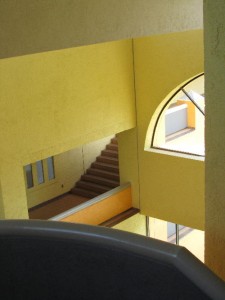

 One of the things I worked a lot on in earlier months this year (and late ones of last year) was the lead article in a cluster of articles that has appeared in the last few days in May’s special edition of Physics Today. They are sort of departmental-colloquium-level articles, so for a general physics audience, more or less. It’s about some of the things I’ve told you about here in the past, concerning exciting and interesting applications of string theory to various experiments in nuclear physics, as well as atomic and condensed matter physics (although we do not have an article on the latter in this cluster). I had a fun time working with Peter Steinberg on the article and remain grateful to him for getting us all together in the first place to talk about this topic way back in that AAAS symposium of 2009. It was there that Steven Blau of Physics Today got the idea to approach us all to do an article, which resulted in this special issue.
One of the things I worked a lot on in earlier months this year (and late ones of last year) was the lead article in a cluster of articles that has appeared in the last few days in May’s special edition of Physics Today. They are sort of departmental-colloquium-level articles, so for a general physics audience, more or less. It’s about some of the things I’ve told you about here in the past, concerning exciting and interesting applications of string theory to various experiments in nuclear physics, as well as atomic and condensed matter physics (although we do not have an article on the latter in this cluster). I had a fun time working with Peter Steinberg on the article and remain grateful to him for getting us all together in the first place to talk about this topic way back in that AAAS symposium of 2009. It was there that Steven Blau of Physics Today got the idea to approach us all to do an article, which resulted in this special issue.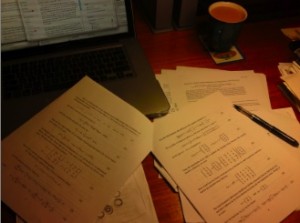 …more to go. I’ve finished one of the papers I’ve been writing (this one co-authored with my student, Tameem) after delaying on it for months. I’m not sure how things got quite this backed up in terms of things I have to do, but they have. I meant to start on a new, long project last week, and all my efforts these days have been toward clearing away all those things I want to get done and dusted before focusing on that. It is taking time, but gradually the clearing is happening. Two more manuscripts to complete.
…more to go. I’ve finished one of the papers I’ve been writing (this one co-authored with my student, Tameem) after delaying on it for months. I’m not sure how things got quite this backed up in terms of things I have to do, but they have. I meant to start on a new, long project last week, and all my efforts these days have been toward clearing away all those things I want to get done and dusted before focusing on that. It is taking time, but gradually the clearing is happening. Two more manuscripts to complete. Ah yes. I’ll admit it: Except for the moustache and a few other details, the scene is eerily familiar… 😉 (The embed for the video is below.)
Ah yes. I’ll admit it: Except for the moustache and a few other details, the scene is eerily familiar… 😉 (The embed for the video is below.)